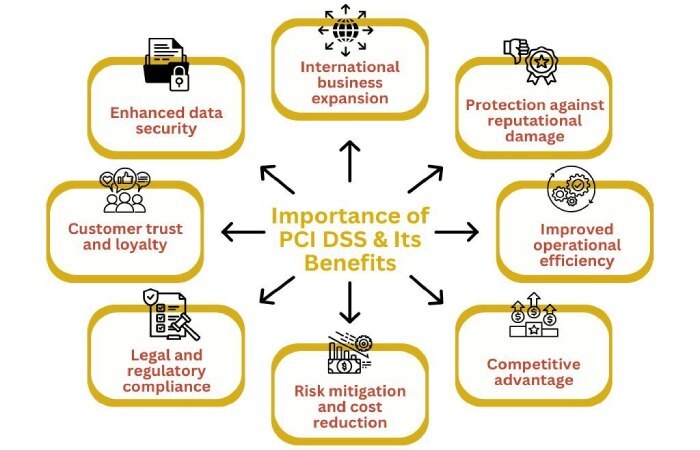There’s a common misconception among domain owners when it comes to email authentication protocols— we have configured SPF, DKIM, and DMARC, so we’re completely safe. They often mistake implementation for enforcement; they need to understand that there is a journey from SPF implementation to SPF enforcement. If you keep taking the two as the same, then you are in a bubble!
SPF is a very sensitive email authentication protocol, and it’s very common for an SPF record to be erroneous. It’s almost inevitable for any SPF record to have never had any errors. However, if you regularly check your SPF record and gain insights into email activities by evaluating DMARC reports, then you can surely mitigate the damage or even prevent it altogether.
But now you ask, how can all of this lead to losses in the millions?

Well, email is an integral communication channel for any company. A misconfigured SPF record is no less than a backdoor for threat actors. This increases the risk of phishing and business email compromise (BEC) attacks, resulting in significant financial damage. We also can’t overlook the loss when sales and marketing campaigns fail to reach inboxes, thereby reducing conversion rates.
And all this is just a glimpse of a deeper mess. This blog specifically discusses how considering invisible SPF failures as merely a minor technical issue can be the root cause of more significant problems for an enterprise.
Understanding invisible SPF failures– Why does SPF ‘appear’ fine but fail silently?
Often, SPF records look properly configured; they pass syntax checks and show a ‘pass’ result in some tools. However, they can still have severe technical issues.
For example, email messages may pass SPF but still be flagged as suspicious or bounced due to issues such as outdated DNS records, unreliable third-party inclusions, or inconsistent SPF evaluations across mailbox providers. Since different email receivers cache DNS results for varying durations, a change in your SPF record may take effect for Gmail but not for Outlook, resulting in unpredictable behavior.

In many enterprise environments, it is not enough for emails to simply pass the SPF checks; they must also align with the visible ‘From’ domain and cooperate with DKIM and DMARC policies. So, in such situations, your emails can be treated as potentially fraudulent even if they have passed SPF.
Technical anatomy of misconfigured SPF records
Here are the common misconfigurations found in broken SPF records-
Broken ‘include’ statements and typos
It’s a technical problem when the domain referred to in the ‘include’ mechanism is misspelled, deprecated, or points to a provider that no longer publishes a valid SPF record. Sometimes, the third-party vendor added using the ‘include’ statement changes or retires DNS entries over time, breaking downstream SPF chains.
Looping or excessive DNS lookups
SPF has a strict limit of 10 DNS lookups per check, and this limit counts towards every instance of ‘include,’ ‘a,’ ‘mx,’ and ‘ptr’ mechanisms. When SPF records reference other SPF records that, in turn, include more entries (nested includes), it quickly exceeds this threshold.
Once your SPF record reaches the limit, the evaluation process stops completely, triggering recipients’ servers to treat emails from your domain as suspicious.
SPF records of large enterprises are more prone to exceeding this limit as they use multiple SaaS vendors, marketing platforms, and email gateways.

Misuse of broad mechanisms (a, mx, and ptr)
The ‘a,’ ‘mx,’ and ‘ptr’ mechanisms are considered broad and dynamic because they authorize IP addresses based on DNS entries, such as A records or MX hosts. Adding them to your SPF record surely offers convenience, but they pull in more IP addresses than intended; they even end up including the ones unrelated to email services.
The ‘ptr’ mechanism relies on reverse DNS, which is slow and susceptible to spoofing, and is therefore discouraged. So, overall, these broad mechanisms expand the attack surface by unintentionally allowing IP addresses that shouldn’t really be allowed to send emails on your behalf. If a malicious actor spots this loophole before you, they can attempt phishing in your name.
The business cost of overlooked SPF errors
Phishing and BEC attacks are not minor threats; they carry an average breach cost of multi-millions of dollars. In 2023, the UK business alone incurred a loss of almost $3 billion in a single year.
Here is a detailed overview of how broken or misconfigured SPF records impact a business, especially its financial dynamics-

Poor email deliverability and sender reputation
When emails sent from your domain fail SPF authentication, mailbox providers treat them with suspicion. In such situations, even genuine emails may be incorrectly filtered into spam or rejected outright, compromising communication reliability.
SPF failures are tracked by ISPs like Gmail, Outlook, and Yahoo. Repeated failures erode your domain’s sender score, making it harder for future messages to reach inboxes, even if the SPF is later fixed.
All of this ultimately triggers mail servers to flag your domain as risky if SPF errors persist, resulting in delays in delivery. In worst cases, your domain can get blocklisted, cutting off your communication pipelines with clients, prospects, and partners.
Financial loss from missed opportunities
Email-driven revenue funnels collapse when campaigns don’t land in inboxes. SPF errors may silently harm ROI, especially in B2B companies where a single missed email can result in a lost deal worth thousands.
Also, SPF misconfigurations block system-generated messages, like invoices, ticket replies, or alerts. So, if vendors or clients don’t receive this communication, the confusion can lead to delays, complaints, or churn.

Compliance and security risks
Data protection standards, such as GDPR, HIPAA, DORA, and PCI DSS, require companies to protect user data through demonstrable steps. If your domain’s SPF record is broken, these regulatory bodies consider this a lapse in email security, leading to litigation and penalties.
Even one spoofed email can lead to a serious data breach or money loss, and that’s enough to trigger audits, hurt your brand’s reputation, and lead to fines worth millions. This hits even harder in industries like finance, insurance, and healthcare, where protecting sensitive data isn’t optional.

Proactive SPF hygiene is the way forward
SPF misconfigurations usually go unnoticed until serious damage comes to the surface. That’s why SPF management is an ongoing process and not a one-time task. So, as a domain owner, it’s your responsibility to assign internal ownership that tracks and officially documents every change made to the SPF record.
Considering regular SPF lookups using tools like Kitterman is one of the proactive SPF hygiene practices that can catch silent errors and lookup limit issues in the early stage. If your SPF record has already exceeded the DNS lookup limit of 10, use our automatic SPF flattening tool so that SPF stops being just a checkbox and starts serving its true purpose of protecting your domain, emails, and brand value.






